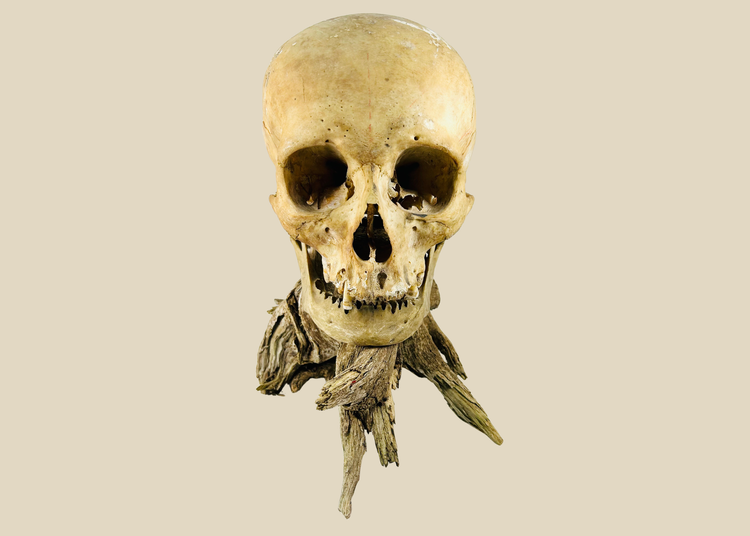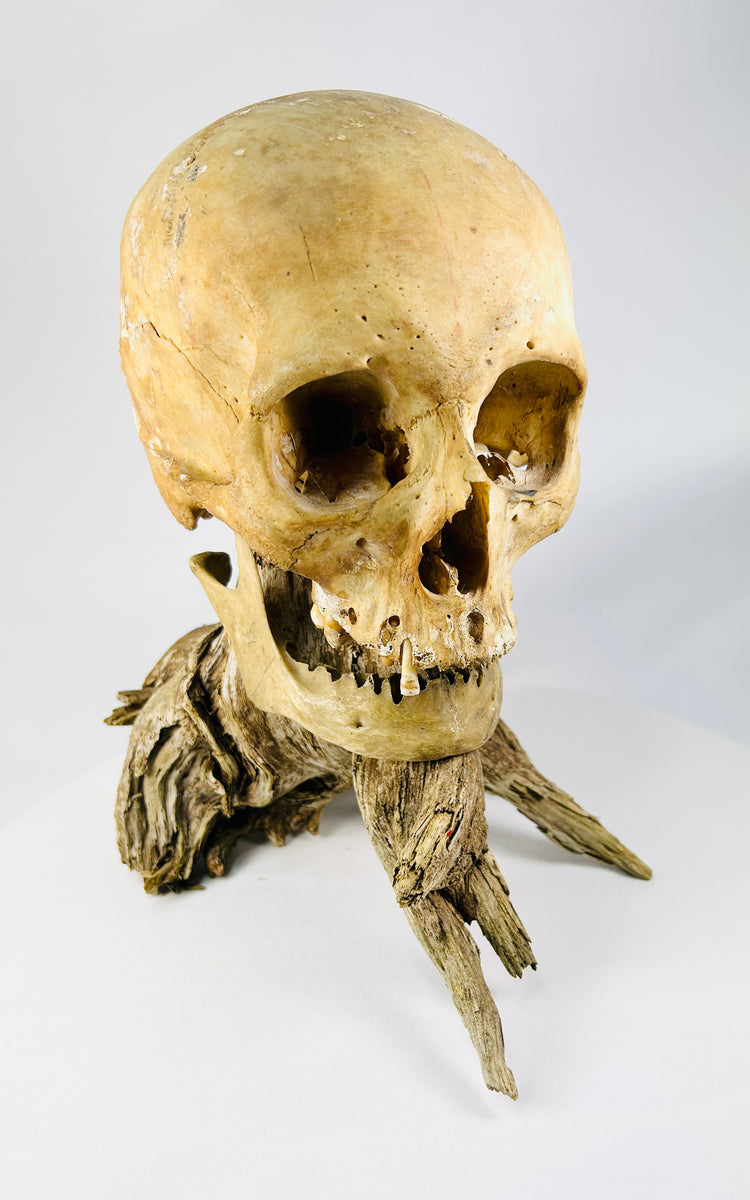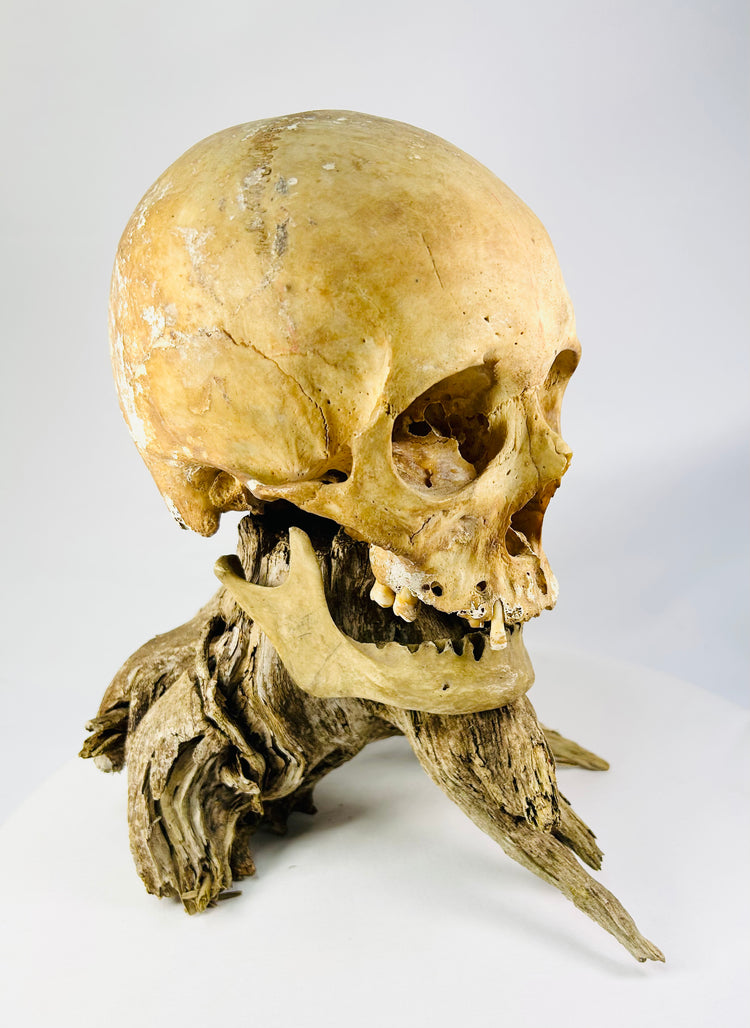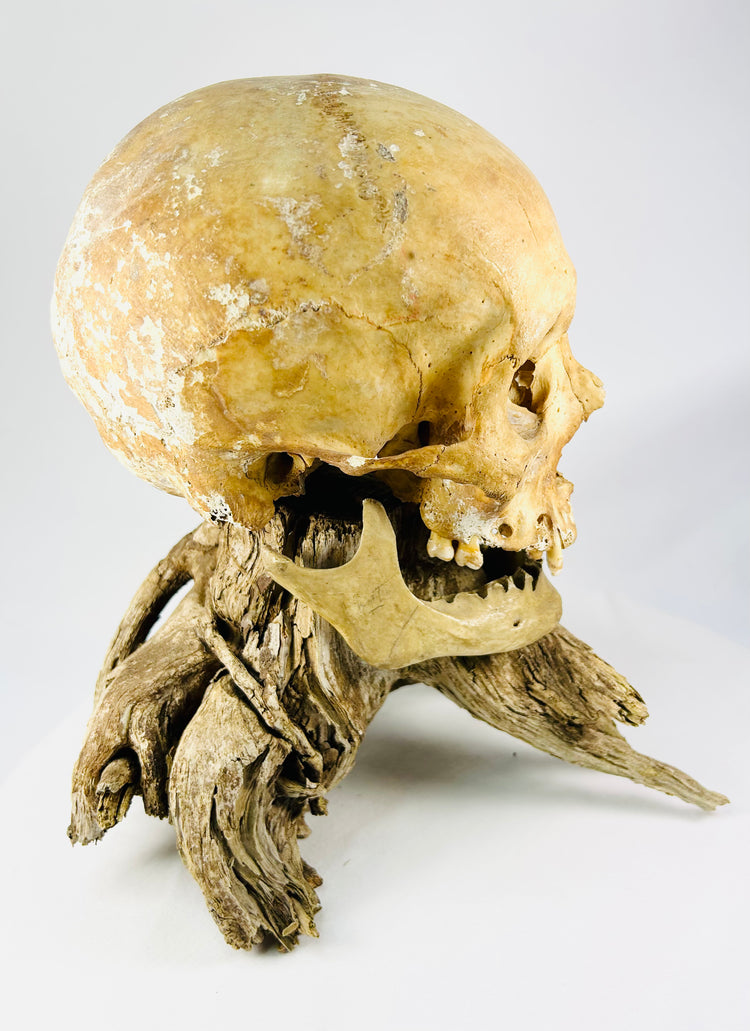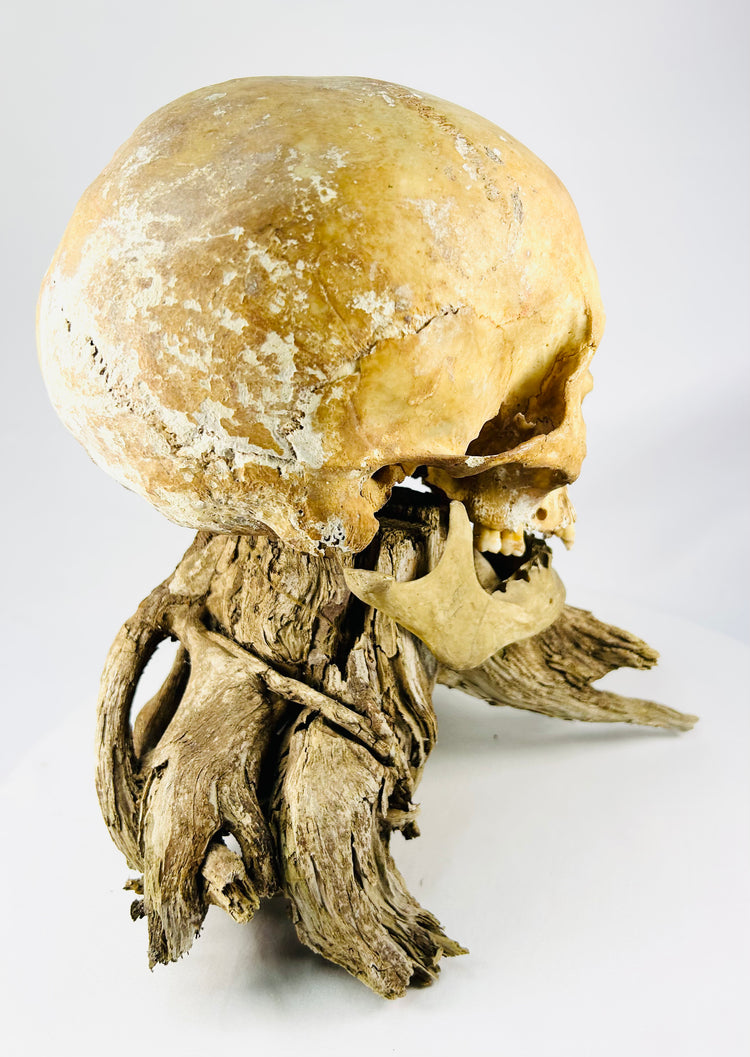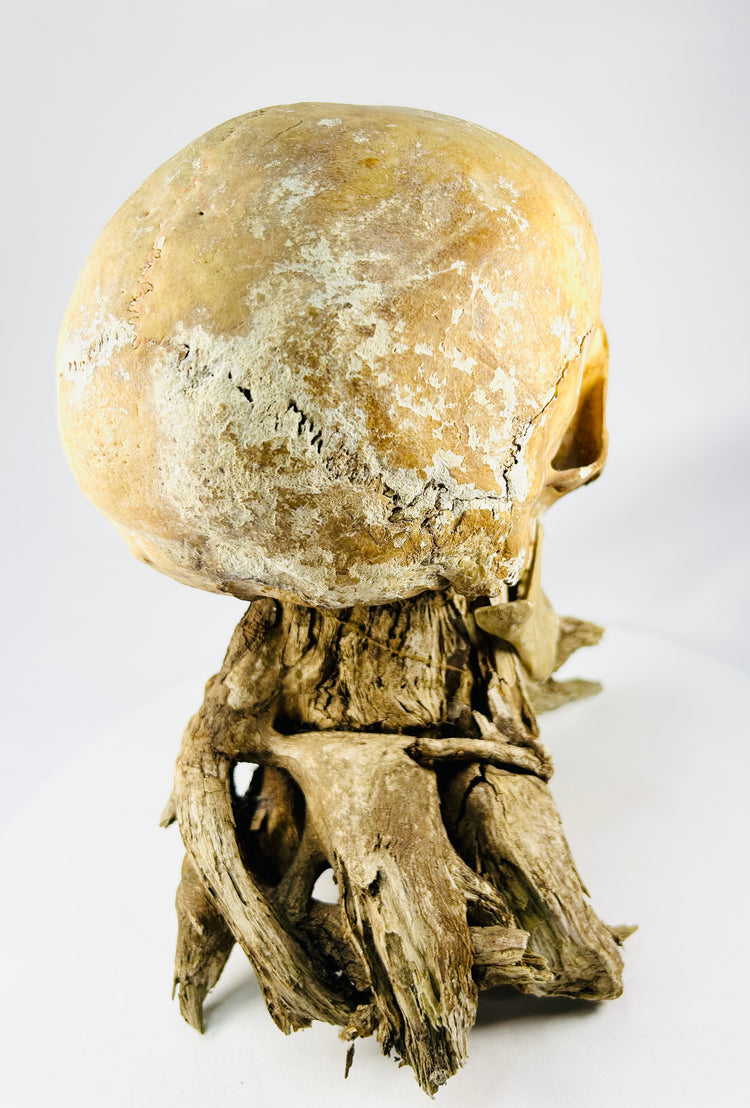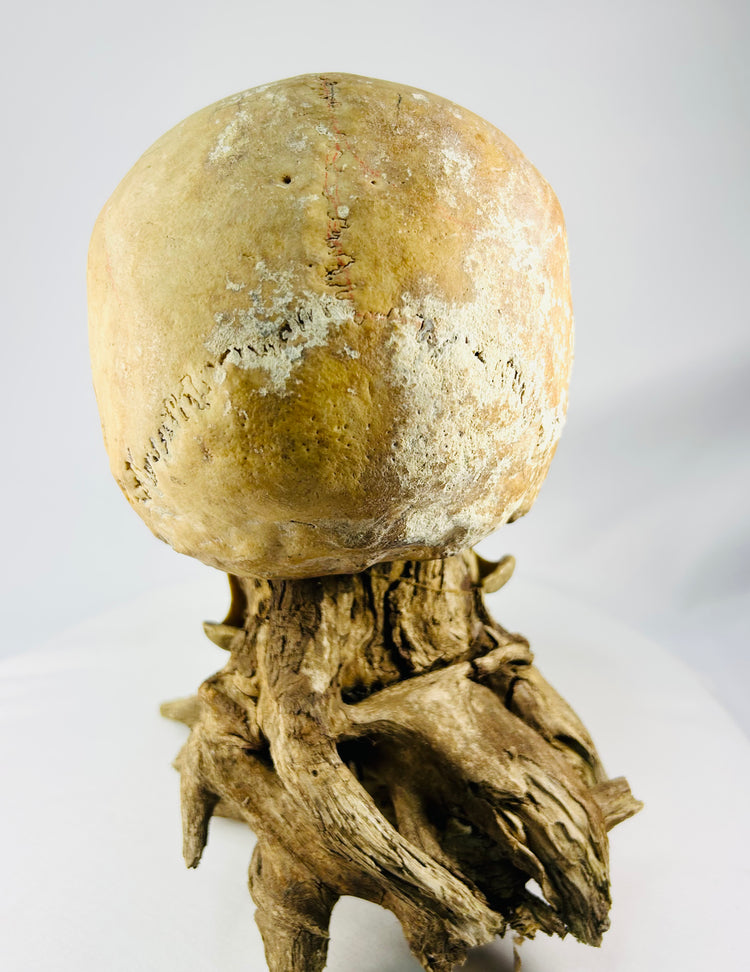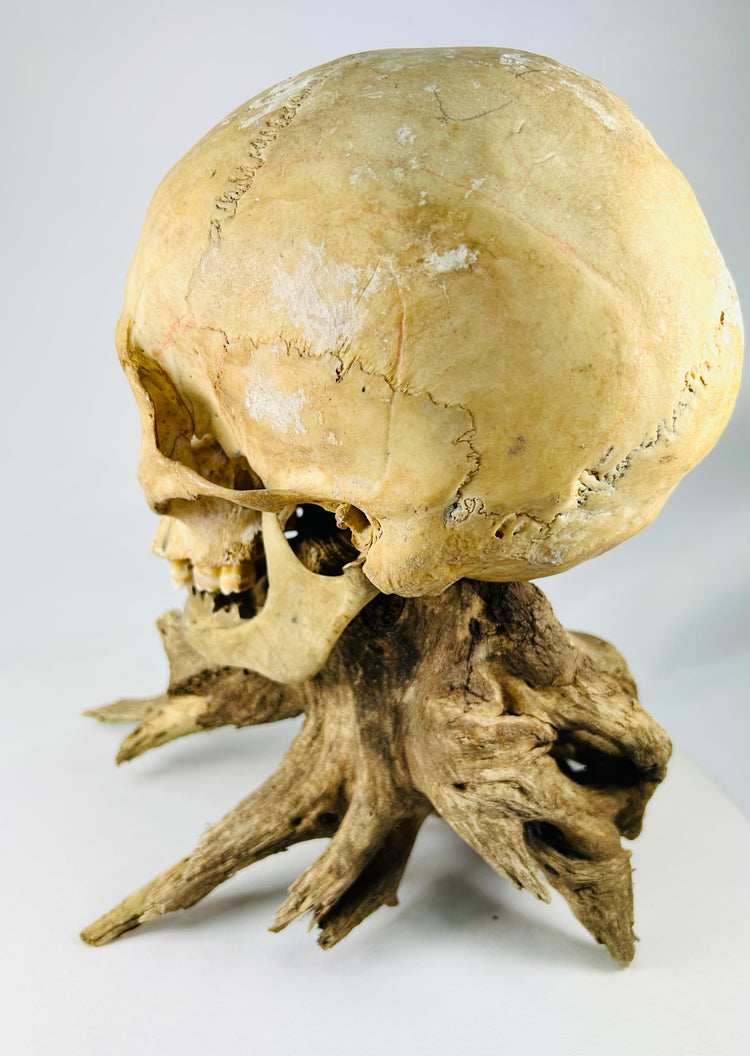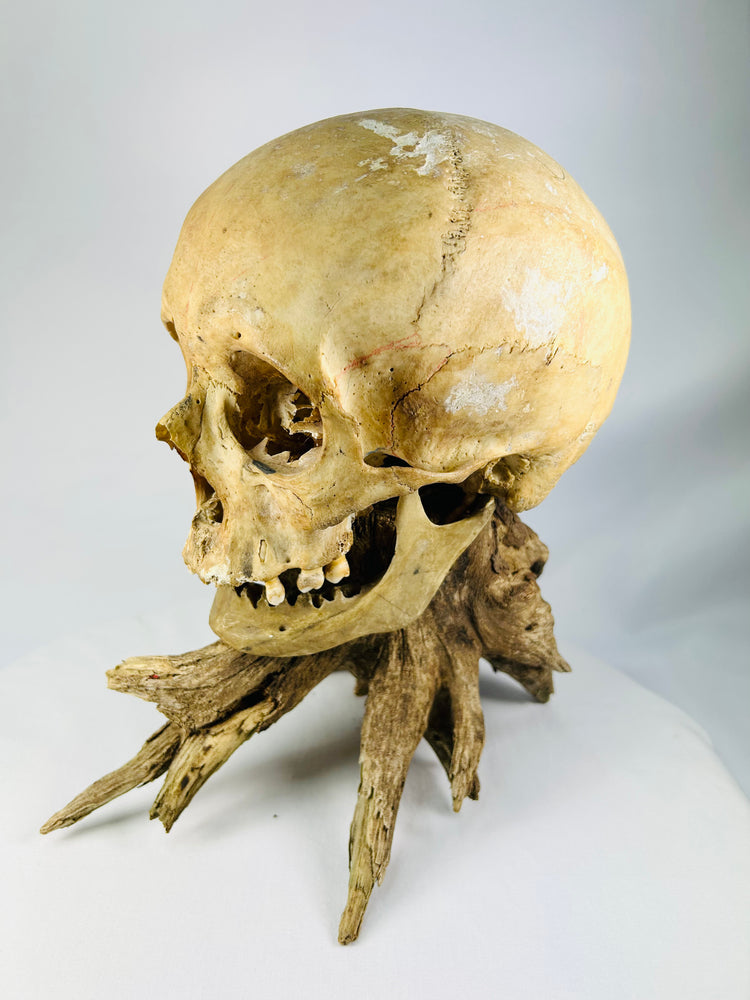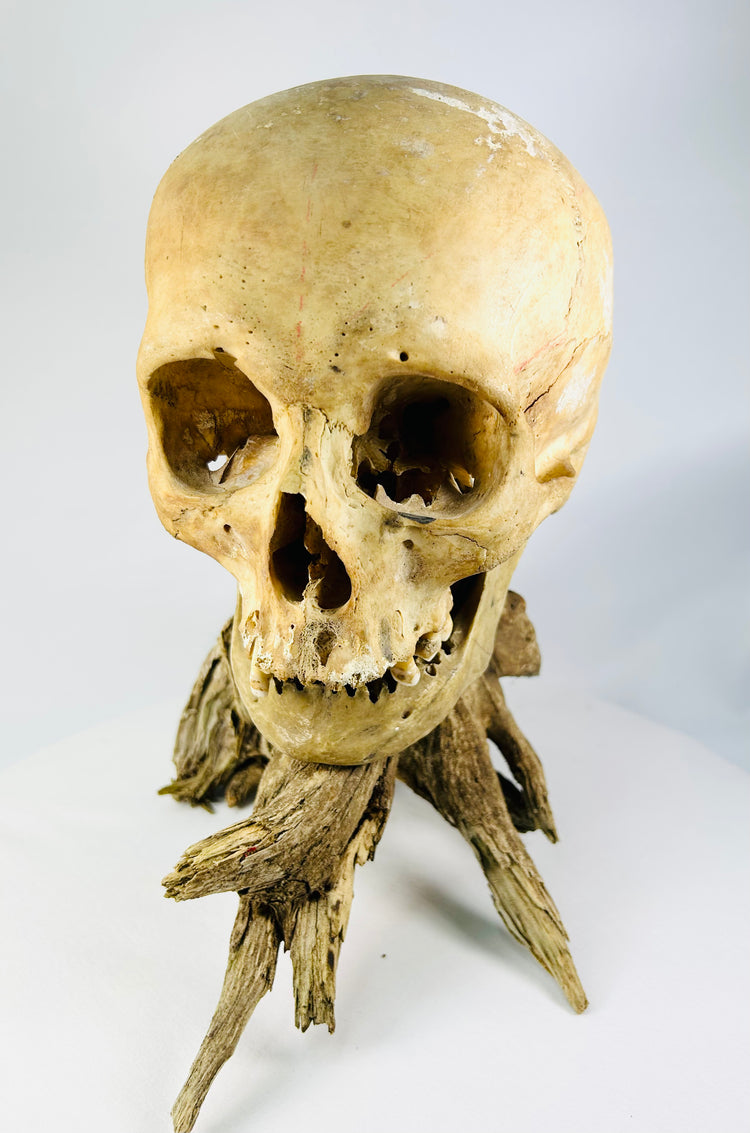Antique Anatomical Skull | Genuine Human Specimen on Wood Stand | 19th Century
Description
More
Less
Historical Context & Origin
Region: Europe or North America
Material: Human bone, natural driftwood
Period: Circa 19th–early 20th century
Description
A rare and authentic antique human skull, mounted on an organic driftwood base for stability and study display. This macabre yet scientifically significant specimen demonstrates the enduring fascination with anatomy and mortality in the 19th and early 20th centuries—a period when medical specimens, phrenological studies, and curiosity-cabinet displays were at the height of popularity.
Features
- Remarkable preservation with natural coloration and intact cranial sutures
- Partial dentition with present and articulated lower mandible
- Mounted on a naturally weathered driftwood base for stability and aesthetic presentation
- Evokes the atmosphere of early anatomical museums and private medical collections
Cultural Significance
During the 19th century, human skulls were frequently used in medical universities, teaching hospitals, and private anatomical collections as essential tools for education and research. Today, these specimens are regarded as powerful artifacts that bridge the boundary between science, art, and human history—an enduring reminder of mankind’s quest to understand the body and the soul.
Condition
Well preserved with expected age-related wear, minor natural fissures, and patination consistent with time. The wood base shows stable weathering and structural soundness.
Dimensions (approximate)
Height: 10 in
Width: 6 in
Age
Circa 100–150 years
Learn More
Read More About Human Medical Specimens: The Fascinating History of Medical Skeletons
View of Other Medical Specimens: Skeletal Hand and Skeletal Foot
Description
Historical Context & Origin
Region: Europe or North America
Material: Human bone, natural driftwood
Period: Circa 19th–early 20th century
Description
A rare and authentic antique human skull, mounted on an organic driftwood base for stability and study display. This macabre yet scientifically significant specimen demonstrates the enduring fascination with anatomy and mortality in the 19th and early 20th centuries—a period when medical specimens, phrenological studies, and curiosity-cabinet displays were at the height of popularity.
Features
- Remarkable preservation with natural coloration and intact cranial sutures
- Partial dentition with present and articulated lower mandible
- Mounted on a naturally weathered driftwood base for stability and aesthetic presentation
- Evokes the atmosphere of early anatomical museums and private medical collections
Cultural Significance
During the 19th century, human skulls were frequently used in medical universities, teaching hospitals, and private anatomical collections as essential tools for education and research. Today, these specimens are regarded as powerful artifacts that bridge the boundary between science, art, and human history—an enduring reminder of mankind’s quest to understand the body and the soul.
Condition
Well preserved with expected age-related wear, minor natural fissures, and patination consistent with time. The wood base shows stable weathering and structural soundness.
Dimensions (approximate)
Height: 10 in
Width: 6 in
Age
Circa 100–150 years
Learn More
Read More About Human Medical Specimens: The Fascinating History of Medical Skeletons
View of Other Medical Specimens: Skeletal Hand and Skeletal Foot
You May Also Like




































